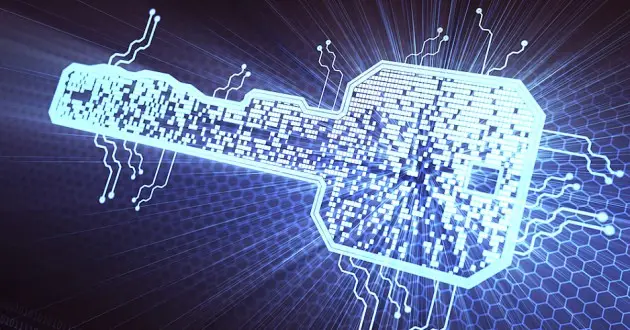
A firewall is hardware, software, or a combination of both that is designed to block unauthorized access. All data traveling between the internal network and the Internet should pass through the firewall first. The more extensive the series of network connections, the greater chance there is for unauthorized access by hackers, others outside the organization, and unauthorized employees. To limit the potential damage of unauthorized access, sensitive data should be encrypted. Encryption is the process of converting data into secret codes referred to as cipher text. It can only be decoded by those who possess the correct encryption key or password.
Symmetric encryption uses a single encryption key that must be used to encrypt and decode data. The longer the encryption key is in bits, the harder it will be to break the code. Encryption is especially important for wireless networks, which send network data through the air. A 128-bit key size can create 340 undecillion different possible combinations, or 340 followed by 36 zeros. The longest encryption keys are not yet widely adopted in the U.S., but they are expected to be used in the near future. The strength of the encryption refers to how difficult it would be to broken the code, and the longer the key is, the stronger the encryption.
Wireless network equipment uses an encryption method called wired equivalency privacy, or WEP. WEP is based on a computer-specific address, which is easy for hackers to misuse. A wireless network that uses WPA, on the other hand, requests connection to the network via an access point. The access point then requests the user identity and transmits that identity to an authentication server. Thus, WPA authenticates the computer and the user. Another important security feature that should be used in wireless networks is a unique service set identifier, or SSID. The SSID is a password that is passed between the sending and receiving nodes of a wireless network.
A virtual private network uses tunnels, authentication, and encryption within the Internet network to isolate Internet communications. A VPN is employed when the employee connects to the IT system through a public network such as the Internet. Tunnels are end-to-end connections of network cards or other hardware; the VPN traffic can be thought of as traveling through a separate tunnel within the Web network of public lines.
You can determine whether such sites use SSL technology by examining the URL address. Most website addresses begin with http:// before the URL, but SSL addresses start with https://. IT system operations are also threatened by the many network break-in attempts to insert viruses or worms into a system. To avoid destruction of data programs and to maintain operation of the IT system, an organization must employ antivirus software.
Vulnerability assessment is the process of proactively examining the IT system for weaknesses that can be exploited by hackers, or malicious employees. Intrusion detection systems are specific software tools that monitor data flow within a network and alert the IT staff to hacking attempts. An intrusion detection system can be thought of as the burglar alarm for the IT system in that it alerts the appropriate users of break-ins.
Auto312